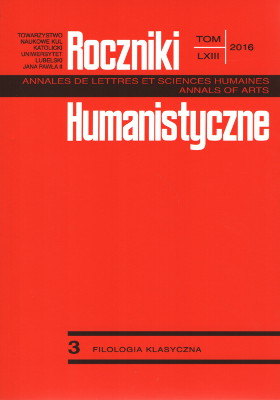Gigarum vel gigarus ‘kolokazja jadalna’ – nazwa etruska czy galijska?
Is gigarum or gigarus ‘taro’ an Etruscan or Gaulish term?
Author(s): Krzysztof Tomasz WitczakSubject(s): History, Language and Literature Studies, Theoretical Linguistics, Ancient World, Historical Linguistics, Comparative Linguistics, Philology
Published by: Towarzystwo Naukowe KUL & Katolicki Uniwersytet Lubelski Jana Pawła II
Keywords: botanical names; Etruscan language; Gaulish language; Pedanius Dioscorides
Summary/Abstract: Ancient authors, including Pedanius Dioskorides of Anazarbus, Pseudo-Dioskorides and Marcellus Empiricus of Burdigala, quote numerous regional terms for ‘taro, Colocasia esculenta (L.) Schott’, the well-known plant of the Araceae family (see illustr. 2). According to Ps.-Dioscorides, a name gigarum was used by the Etruscans to refer to the plant, whereas Marcellus of Burdigala (now Bordeaux) informs us that the Gauls used a similar form gigarus. Ps.-Dioscurides’ opinion seems to be confirmed by the cognate Italian names for ‘arum, Arum L.’, attested in Toscany (e.g. Ital. Tosk. gígaro ‘Arum L.’ in Versilia, gíaro in Mugello, gíghero and gíchero in Senese, gíaro ‘Italian arum, Arum italicum Mill.’ in Siena) as well as in Lazio (cf. Ital. dial. gígara, gíara ‘snakeshead, Arum maculatum L.’). As the Etruscan language had no voiced consonants in its phonological system, the plant name gigarum, found in Etruria, should be treated as a Gaulish loanword. The etymology put forth in this paper argues for a Celtic and Indo-European origin, cf. Old Irish gér adj. ‘sharp (of taste), sour, acid, harsh’ (< PIE. *giĝ-[ə1]-ró-). All plants of the Araceae family are bitter and sharp in taste (taro root can be consumed after being cooked).
Journal: Roczniki Humanistyczne
- Issue Year: 64/2016
- Issue No: 3
- Page Range: 17-29
- Page Count: 13
- Language: Polish

